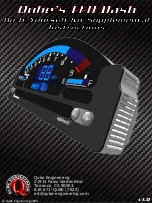
3/8" screw then rotate it clockwise until it is fully seated on the center column.
Storage
Invert the legs using one of the methods above. Store the tripod in the carry
case provided to protect against damage from the elements.
Applying weight to increase tripod stability
The tripod is designed with a special spring loaded hook located at the
bottom of the center column. By attaching weight on the hook, the stability of the
tripod can be increased for sharper images. The weight can be in the form of a
sandbag, accessory bag, camera bag, etc.
Care & Maintenance
Clean the tripod with a damp cloth.
Leg maintenance: In the event that sand or dirt gets stuck in the tripod, the
leg may become hard to extend and retract. This can be rectified by disassembling
the legs. Twist the rubber knob of the leg that is stuck counterclockwise, until it
detaches from the threads. Be careful as two black tabs may fall out. When done
removing any sand, line tabs with the indentions inside the holes at the end of the
leg, and insert the leg back into the stand.
Notes:
-Each leg is designed with an Allen bolt. If the legs become loose after long term
use, you may adjust the tension on the leg attachment screws/pivot points.
-
Always ensure all leg lock knobs, center column knob and ball head knobs
are securely tightened before placing the tripod and camera on a firm
surface.
-There is a tipping risk for fully extended tripods. This can be due to
moving the tripods while fully extended, things such as uneven surfaces or
heavy wind. To reduce the risk of tipping over, we recommend placing one
tripod leg facing the same direction as the camera or the heavy part of
mounted equipment to balance the weight. We also recommend purchasing
sand bags or weights to set on the tripod legs to hold the tripod in place.
Ravelli™ guarantees the tripod only and is not liable for damage caused to
backdrops, cameras, lighting, or any other items
Summary of Contents for APGL5
Page 1: ...APGL5 Model Tripod ...
Page 3: ...Identifying the parts ...



























